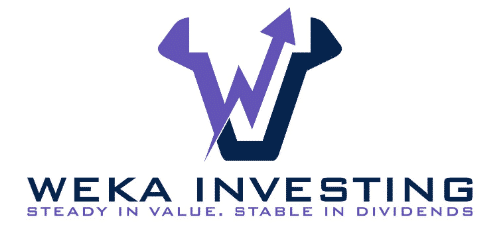Why a Mix of Bonds, Preferred Stock, and Common Stock May Be Wise for Your Investment Portfolio
As we navigate the complexities of today’s financial markets, our investment portfolio often requires a strategic blend of various financial instruments. In the realm of corporate financing, organizations leverage equity financing, including bonds preferred common, to meet diverse funding needs. This approach not only helps in risk management but also caters to different investor preferences. A carefully considered mix can provide bankruptcy protections, consistent dividend payments, and influence over the debt-to-equity ratio of a company. These hybrid securities serve as a balanced intermediary, combining the dependable nature of bonds with the dynamic potential of common stock.
Understanding the intricacies of each investment type is essential for crafting a diversified portfolio that reflects our financial goals. Bonds offer a stable income and principal protection, preferred stock introduces elements of both bonds and common equity, and common stock allows us to share directly in the success of a company’s growth. By employing a mix of these assets, we strike a balance that aims to yield advantages across the spectrum of risk and returns in corporate financing.
Key Takeaways
- Balanced portfolios may lead to better risk management through a combination of bonds, preferred stock, and common stock.
- Preferred shares stand between common stock and bonds, providing bankruptcy protections and regular dividends without diluting voting power.
- Companies opting for equity financing with preferred stock can manage a more favorable debt-to-equity ratio.
- Diversity in financial instruments caters to various investor needs and enhances financial stability in corporate financing.
- Mixing these securities can allow investors to capture the long-term growth of common stocks with the stability of bonds and privileges of preferred shares.
The Investment Spectrum: Understanding Bonds, Preferred, and Common Stocks
As we delve into the investment spectrum, a holistic understanding of financial instruments such as bonds, preferred stocks, and common stocks becomes imperative. Recognizing their distinct natures, the functions they serve in capital raising, and their contributions to financial stability can profoundly influence our portfolio construction. In the journey toward a well-rounded investment approach, let’s unravel the core attributes of these mainstays of fixed income and the stock market.
Fixed Income and the Role of Bonds: At one end of the investment spectrum lie bond types, a crucial component of fixed income securities. Bonds are favored for their predictable returns and are an indispensable option for investors prioritizing financial security over growth potential.
Bond Types: We observe a variety, from Treasury bonds safeguarding against market volatility to municipal and corporate bonds that offer a range of risk and return profiles, catering to diverse investor appetites.
Preferred Stocks: Nestled between the assuredness of bonds and the dynamism of the stock market, preferred stocks present a balanced choice. They typically deliver consistent dividend payments akin to bond interest payouts, yet they prosper under the equity umbrella, opening the door to growth potential in a thriving enterprise.
Common Stocks and the Stock Market: On the opposite end are common stocks, intrinsically tied to the stock market’s fluctuations and poised for substantial growth potential. Here, investors engage directly with companies’ narratives, participating in capital raising efforts and potentially influencing corporate strategies.
Investing is not a game where the guy with the 160 IQ beats the guy with 130 IQ… It’s about having a portfolio where the potential for reward outweighs the risk involved.
I often draw parallels for my students between constructing a resilient investment portfolio and designing flexible supply chains. Just as a diverse blend of financial instruments shields investors from market volatility, a well-balanced supply network with supplier redundancy enhances organizational agility when disruptions strike.
We sometimes use a case about a factory which single-sourced a critical valve component from one vendor to reduce costs. When that supplier suffered a fire, the entire production line halted for weeks as they scrambled to source replacements. The savings from a streamlined supply base proved short-sighted.
Similarly, portfolios concentrating heavily in a singular asset type exposes investors disproportionately. The old adage reminds us not to put all eggs in one basket. To mitigate risk, we must implement checks and balances. In class discussions, I emphasize the need for moderation along the efficiency-resilience spectrum. While chasing maximum productivity, we cannot afford fragility in the face of unforeseen events. Whether designing supply chains or stock portfolios, pragmatism and diversification provide stability when the winds of change blow.
Our smart allocation strategies blend investment vehicles across this spectrum, balancing risk and return. Visualize with us through the following table, the contrast between these instruments in terms of payouts, risks, and investor privileges:
| Investment Vehicle | Type of Return | Risk Profile | Investor Privilege |
|---|---|---|---|
| Bonds | Fixed Income (Interest Payments) | Lower Risk, Stability Focused | Debt Repayment Priority |
| Preferred Stocks | Fixed/Variable Dividend Payments | Moderate Risk, Balance of Security and Growth | Liquidation Preference Over Common Stock |
| Common Stocks | Growth Potential (Dividends + Capital Appreciation) | Higher Risk, Growth Focused | Voting Rights, Profit Sharing |
In leveraging these options, we not only consider risk and return but also dissect the versatility in dividend payments and the implications on the financial stability of our investment choices. Knowledge of these facets enables us to build a base from which we can diversify to meet our individual objectives, whether it’s preserving wealth through fixed income avenues, pursuing aggressive growth in the stock market, or balancing between them.
- The dynamic stock market, home of common stocks, offers limitless growth potential, attached to the inherent risk of the equities market.
- Fixed income instruments, such as bonds, ground our portfolio in a bedrock of stability, especially vital in tumultuous economic climates.
- Preferred stocks serve as a bridge within this spectrum, yielding advantages akin to both fixed income and common stock while alleviating certain risks.
As we continue to peruse the threads of capital raising and investment dynamics, it is clear that our financial stability hinges on the equilibrium struck between the offered securities. With these fundamentals, we are better positioned to structure our portfolios along a path that aligns with our financial assertions and the inherent vicissitudes of the market.
How Diversified Portfolios Balance Risk and Return
The blueprint for a robust investment portfolio lies in its ability to harmonize the relationship between risk and return. We maintain diversified portfolios as a method to mitigate risk while positioning for optimal growth. It’s an investment strategy addressing the inherent volatility in the market, ensuring that the elements of stability, revenue, and growth are well-represented.
Common Stocks and Potential for Growth
Integral to diversified portfolios are common stocks, representing ownership in a company and offering substantial growth potential. Their value invariably reflects a corporation’s profitability and investor sentiment, making common stocks a choice for those with a longer financial horizon. It’s a truth universally acknowledged that higher rewards often come with higher risks, and in the domain of common stocks, this holds particularly true.
- Common stocks act as gateways to capital appreciation.
- While riskier than bonds or preferred stock, they offer higher potential returns.
- A time-tested saying among us investors is, “put your money in stocks and watch it grow over the long term.”
Preferred Stock: Stable Dividends and Convertibility Options
When investors seek diversified portfolios, they often turn to preferred stock for its cocktail of features from both the bond and common stock worlds. Offering greater dividend stability than common stocks and typically carrying less risk than bonds — preferred stock dividends are a critical piece of the investment jigsaw puzzle.
- Stability in cash flow is symbolized by preferred stock dividends.
- Convertible options present financial elasticity, bridging risk and return.
- A spotlight on convertibility often heralds a strategic flexibility prized by investors.
The Stability and Security of Bonds in Investment Strategy
Bonds serve as the sturdy foundation within a diversified portfolio, known for their bonds stability and reliable interest income streams. They provide a safety net during market downturns and anchor the portfolio, solidifying the overall investment strategy against the backdrop of economic volatility.
- Bonds often equate with protection against volatility, fortifying the framework of diversified portfolios.
- Interest payments from bonds usher in a predictable revenue stream.
- As we venture closer to investment end goals, an increased bond representation often becomes a prudent path.
Here, the interplay of asset types within our portfolios mirrors our financial ethos—seeking growth through common stocks, enjoying the rewards of preferred stock dividends, and relying on the bedrock of bond stability. In grasping the characteristics of each investment option, we position ourselves to maneuver through the economic landscapes with a well-balanced financial strategy.
| Investment Type | Risk Scale | Potential Returns | Typical Investors |
|---|---|---|---|
| Common Stocks | High | Unlimited Growth | Growth-Oriented, Long-Term |
| Preferred Stocks | Moderate | Stable Dividends, Growth via Convertibility | Income-Oriented with Growth Perspective |
| Bonds | Low | Fixed Income, Stability | Risk-Averse, Income-Focused |
It’s by weighing the scales of risk and potential returns that we fortify our financial journey, enabling a calculated path to well-schooled gains and astute protection against losses
In conclusion, while our financial journey embraces a variety of investment options, it’s the wise calibration between common stocks growth, preferred stock dividends, and bonds stability that delineates a savvy investor’s roadmap. This is our financial strategy, ensuring we’re well-equipped to embrace market gyrations with a balanced stance, paralleling the age-old adage: don’t put all your eggs in one basket.
The Role of Bonds in a Risk-Managed Investment Approach
When we consider the construction of a risk-managed investment portfolio, we place a significant emphasis on the role of bonds. As fixed income instruments, bonds form the bedrock of a strategy aimed at mitigating exposure to market volatility. For us, bonds symbolize financial security—a critical aspect for any investor aiming to shield their capital from the frequent fluctuations that equities endure.
Bonds, by their design, offer a stream of predictable returns, thanks to their structured payout schedules. This certainty is a haven for investors, particularly those approaching retirement or those with a lower risk tolerance, seeking dependable income over potential high returns. The essential qualities of bonds, notably debt instruments with a credit guarantee, allow investors to plan with a greater degree of accuracy their financial futures.
Nevertheless, holding bonds is not without its challenges. Interest rate risk and credit risk are two pertinent issues associated with bond investments. As interest rates rise, bond prices typically fall, and vice versa. Similarly, a bond’s credit risk refers to the risk of default by the bond issuer, which could result in losses for us. By comprehensively analyzing these risks, we tailor our bond allocations to match our financial objectives while managing exposure to these inherent risks.
Investing in bonds is akin to building a dam; it’s about harnessing the flow of your assets, providing both power and protection to your financial landscape.
Let us look at a comparison within the bond category, illustrating how different types of bonds fit into our risk-managed investment philosophy:
| Bond Type | Interest Rate Risk | Credit Risk | Investment Suitability |
|---|---|---|---|
| U.S. Treasuries | Low | Virtually None | Ideal for Conservative Investors |
| Municipal Bonds | Medium | Low to Moderate | Attractive for Tax-Efficient Income |
| Corporate Bonds | High | Varies by Issuer’s Financial Health | Suitable for Higher Yield with Moderate Risk |
| High-Yield Bonds | High | High | For Investors Seeking Aggressive Yields |
In our role as fiduciaries for financial security, we advocate for a discerning approach to bond investments. It’s not solely about the allure of high yields; it’s about aligning the bonds’ role within a broader, risk-managed investment framework. Whether they are Treasury, municipal, or corporate bonds, each type serves a strategic purpose. Through measured selection and timing, we determine the most appropriate bonds to anchor our portfolios, with a watchful eye on maximizing returns under the umbrella of capital preservation.
Our collective experience has taught us that strengthening the core of a portfolio begins with understanding that debt instruments like bonds are indispensable. They provide a bulwark against uncertainty and act as counterweights to the more volatile aspects of our investment endeavours. As we navigate the seas of the financial markets, bonds remain our steadfast partners, guiding us towards a haven of risk-managed prosperity.
Preferred Stock: Bridging the Gap Between Bonds and Common Shares
Within the investment landscape, there exists a class of securities that encapsulates a unique blend of features from both bonds and common shares: preferred stock. Preferred stock benefits stand out, offering investors an appealing compromise with characteristics such as fixed dividend payments and a favorable position during corporate liquidation. These features not only add a level of predictability to investor yields but also provide a cushion in the event of financial turbulence within a company.
Preferred Stock Benefits: Dividends and Liquidation Preference
We understand the allure of preferred stock benefits; they offer a semblance of the best of both bonds and shares. Unlike common shares, which may pay variable dividends, preferred stock typically assures investors of regular dividend payments. These payments reflect the investment yield that shareholders can anticipate, enabling a forecasted income stream.
In the context of a company’s corporate debt structure, preferred shares stand out in the pecking order. In the event of liquidation, preferred stockholders are granted liquidation preference over holders of common stocks, although they still stand behind debt holders. This stratification underscores the balance between risk and protection afforded to investors.
Why Investors Demand Preference Shares
Our collective understanding of market dynamics underpins why certain investors gravitate towards preference shares. Observing bonds vs. shares, preference shares emerge as a favorable choice for those seeking higher investment yield without the heightened volatility typically associated with the equities market.
Preference shares’ rising demand can be attributed to a confluence of factors, notably their ability to amalgamate the security of bond investments with the potential perks affiliated with equity holdings. This dynamic makes preference shares particularly attractive in a volatile market.
Understanding Preferred Stocks’ Callability and Conversion Features
An essential aspect of preferred stocks is their callability. Callable preferred stock grants the issuer the right, but not the obligation, to repurchase the stock at a specific time and price. This feature poses an element of risk but also opens avenues for firms to adjust their corporate debt structure efficiently.
Convertibility is another key feature that increases the allure of preferred stocks. This attribute allows investors to convert their preference shares into a pre-determined number of common shares, magnifying their potential for asset appreciation alongside favorable investment yields
Our analysis illustrates the strategic place preferred stock holds within an investment portfolio, acting as a bridge between the typically lower-yield bonds and the more volatile common shares. As investors and financial professionals, our advisory services accentuate the versatility of preferred stocks in managing portfolio risk while seeking growth and income.
| Features | Preferred Stock | Common Stock | Bonds |
|---|---|---|---|
| Dividend Payments | Regular and Fixed/Variable | Potentially Higher but Variable | Interest Payments (Fixed) |
| Rank in Liquidation | Above Common Stock | Last Claim | Senior Debt Holders |
| Conversion Features | Convertible to Common Stock | Not Applicable | Typically Non-convertible |
| Callability | Often Callable | Not Applicable | May be Callable |
As stewards of our clients’ investments, we aim to demystify the complexities surrounding preferred stocks. By dissecting their characteristics, we empower investors to make informed choices, aligning their investment goals with the inherent qualities of preferred shares. Our efforts ensure that our clients are well-versed in the distinctions that preferred stock holds amidst the investment spectrum.
Corporate Financing: Why Companies Issue Bonds, Preferred, and Common Stock
In the realm of corporate financing, companies are continually making strategic financing decisions to propel their enterprises forward. When it comes to raising capital, businesses employ a mix of financial instruments such as bonds issuance, preferred shares, and common stock offerings. Each of these plays a pivotal role in the delicate balance between maintaining financial operations and optimizing the company’s overall financial health.
We understand that corporate financing is not merely about securing funds; it’s about crafting a capital structure tailored to the company’s unique vision and market position. Issuing bonds, for instance, allows companies to raise substantial amounts while committing to fixed repayment terms. Preferred shares, offering a blend of equity and debt features, cater to investors looking for regular dividends without significant influence over management decisions. Additionally, common stock offerings throw open the doors to the public, inviting investment in exchange for ownership and a say in the enterprise.
In our strategic financing decisions, we weigh various considerations:
- The cost of issuance and its impact on our balance sheet
- The expectations and appetites of investors
- The potential for dilution of existing ownership with new equity
- Preserving voting rights and control over the company
We regard each security type as a tool, poised to address specific financing needs while supporting the growth and sustainability of the enterprise.
Bonds: These tend to be favored for their lower cost relative to equity and their appeal to conservative investors.
Preferred Shares: These are often employed as a means to pay regular dividends and add less dilutive equity to the firm’s capital structure.
Common Stock: Offering these shares generally signals a healthy, growing company that’s open to sharing its success with its investors, who contribute directly to its capital.
Below is a table that outlines the impact of choices in corporate financing on the company’s structure:
| Financial Instrument | Impact on Debt-to-Equity Ratio | Investor Control | Financial Health Indicator |
|---|---|---|---|
| Bonds | Increases Debt | No Voting Rights | Loan Repayment Capacity |
| Preferred Shares | Equity that Acts like Debt | Typically No Voting Rights | Dividend Payment Capacity |
| Common Stock | Increases Equity | Voting Rights Granted | Growth Potential Indicator |
Our approach to raising capital involves an intricate understanding of market trends and investor psychology. Balancing these aspects skillfully is evident in the seamless execution of our financial strategies and the robust financial infrastructure we build.
We stress the significance of transparency and diligence in our financial operations. The issuance of different securities provides investors with varied levels of assurance and engagement with the company. In navigating the ever-evolving landscape of corporate financing, our judicious deployment of bonds, preferred shares, and common stock offerings reflects our commitment to fostering investor confidence and propelling the company’s advancements.
Strategizing for Future Prosperity: The Wrap-Up on Investment Diversity
In the orchestration of our financial decision-making, portfolio diversification stands as the cornerstone of prudent investing. Throughout this discourse, we have underscored the interplay of bonds, preferred stock, and common stock, revealing the tapestry of opportunities they knit together for investor profiles with varied appetites for risk and capital appreciation. We are cognizant of how historical data reinforces the superior long-term investment strategy tied to common stocks, championed by the equity risk premium and sustained economic growth. As we distill the insights gleaned, it becomes clear that a harmonious blend of these security types can fortify a portfolio against the caprices of market shifts, while still basking in the potential for prosperity.
As stewards of our investments, we gravitate towards a balanced strategy that aptly reflects our fiscal ambitions and risk thresholds. Recognizing that a diversified assemblage of financial instruments is the harbinger of stability, we intertwine the assurance of bonds with the dynamism of common stocks, further enriched by the advantageous convergence offered by preferred shares. This synthesis aligns with our assertion that economic serendipities are best captured through a well-structured, holistic investment approach, allowing us to thrive amidst the ebb and flow of the financial tide.
Encapsulating our exploration into the realms of structured equity and debt instruments, the takeaway for us is unambiguous: judicious portfolio diversification, adaptive financial decision-making, and a keen sense of investor profiles form the bedrock of a robust long-term investment strategy. By embracing the nuanced complexities of each asset class—mindful of the perpetual quest for capital appreciation and vigilant in economic foresight—we pledge to continue navigating the avenues of wealth with calculated dexterity and an unwavering eye towards economic growth.
FAQ
Why should an investment portfolio include a mix of bonds, preferred stock, and common stock?
Including a mix of bonds, preferred stock, and common stock in an investment portfolio can help investors achieve a balanced approach to risk management, equity financing, and financial stability. This diversification allows for a balance between steady dividend payments, the potential for growth, and bankruptcy protections, while managing the debt-to-equity ratio and corporate financing needs.
What are the main differences between bonds, preferred stocks, and common stocks?
Bonds are fixed income instruments that offer a structured payout schedule and typically present lower risk. Preferred stocks are hybrid securities providing regular dividend payments and higher claim on assets during liquidation compared to common stocks. Common stocks potentially offer growth tied to company performance but come with higher volatility and risk.
How do diversified portfolios balance risk and return?
Diversified portfolios balance risk and return by allocating investments across various asset classes—such as bonds for stability, preferred stock for steady dividends and convertibility options, and common stocks for growth potential. This mix helps mitigate risk while offering the opportunity for higher returns, tailored to individual financial goals and risk tolerance.
What is the significance of bonds in a risk-managed investment approach?
Bonds play a crucial role in a risk-managed investment approach by providing a more predictable return on investment and lower risk compared to stocks. They are essential for investors seeking financial security, particularly those with a shorter investment horizon focused on preserving capital and securing known income streams.
How does preferred stock bridge the gap between bonds and common shares?
Preferred stock bridges the gap by offering features of both bonds and common shares. It provides fixed dividend payments like bonds, yet it also benefits from the company’s growth potential similar to common stock. Preferred shares rank higher than common stock in liquidation preference, and they sometimes come with convertibility or callability features, offering flexibility and added value to investors.
Why do companies issue bonds, preferred stock, and common stock?
Companies issue these different securities to manage their capital structure, fund operations and projects, and achieve financial stability. Each type of security serves a strategic financing role: bonds for predictable lending, preferred stock for a mix of debt and equity benefits, and common stock for raising capital without increasing corporate debt.
What factors should investors consider when choosing between bonds, preferred stock, and common stock?
Investors should consider their own risk tolerance, investment goals, and time horizon when choosing between these financial instruments. The market environment, interest rate trends, company performance, and individual financial needs, such as the desire for regular income through dividends or long-term growth potential, are critical factors that determine the most appropriate investment choices.
Source Links
- https://www.investopedia.com/ask/answers/042015/why-would-company-issue-preference-shares-instead-common-shares.asp
- https://www.investopedia.com/ask/answers/advantages-and-disadvantages-buying-stocks-instead-of-bonds/
- https://www.fool.com/investing/stock-market/types-of-stocks/preferred-stocks/

Dr. Lincoln C. Wood teaches at the University of Otago in New Zealand. He is an avid investor and educator. He loves cash flow, income, and dividends when investing. He likes to buy undervalued companies with strong advantages and earnings growth.



